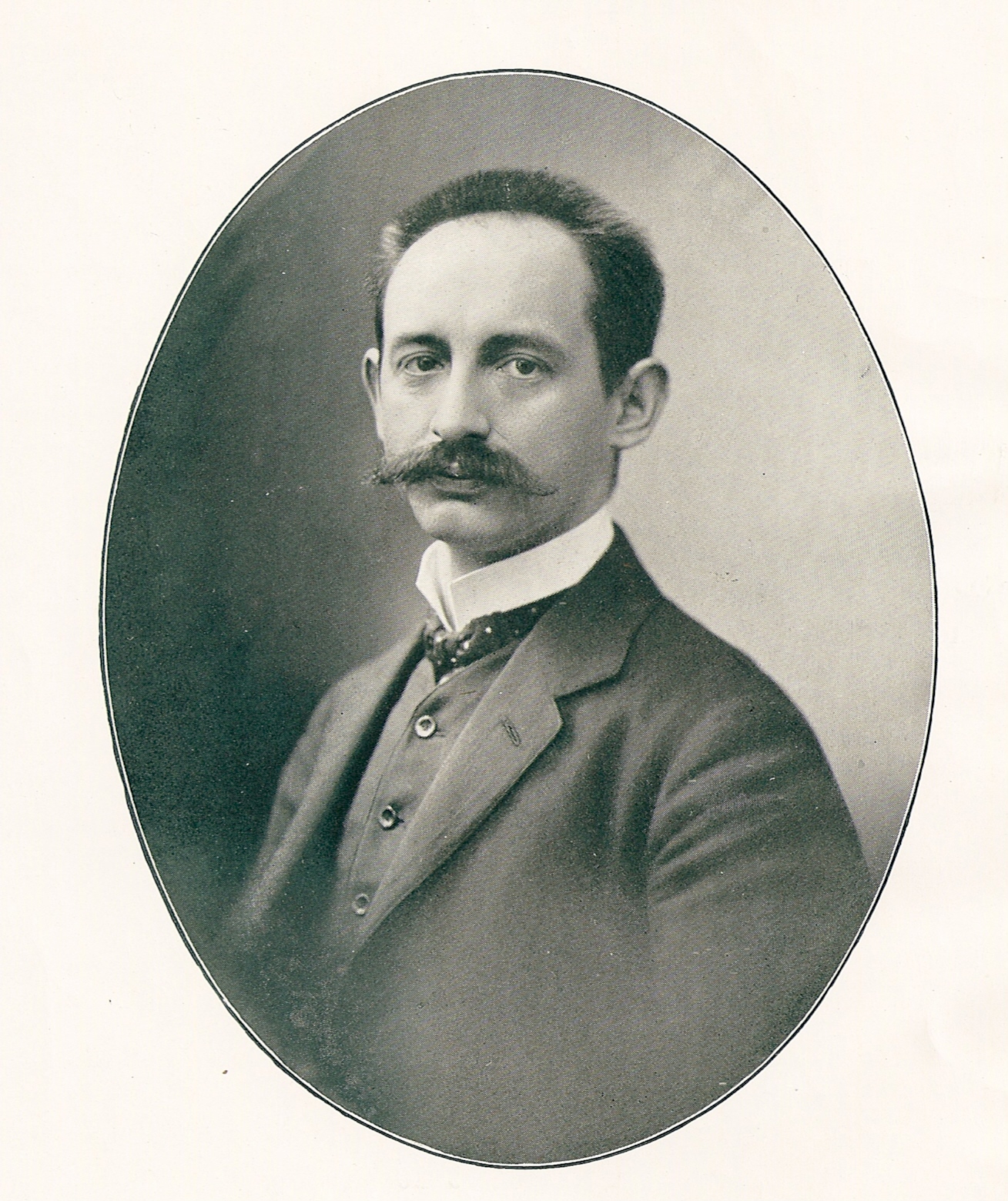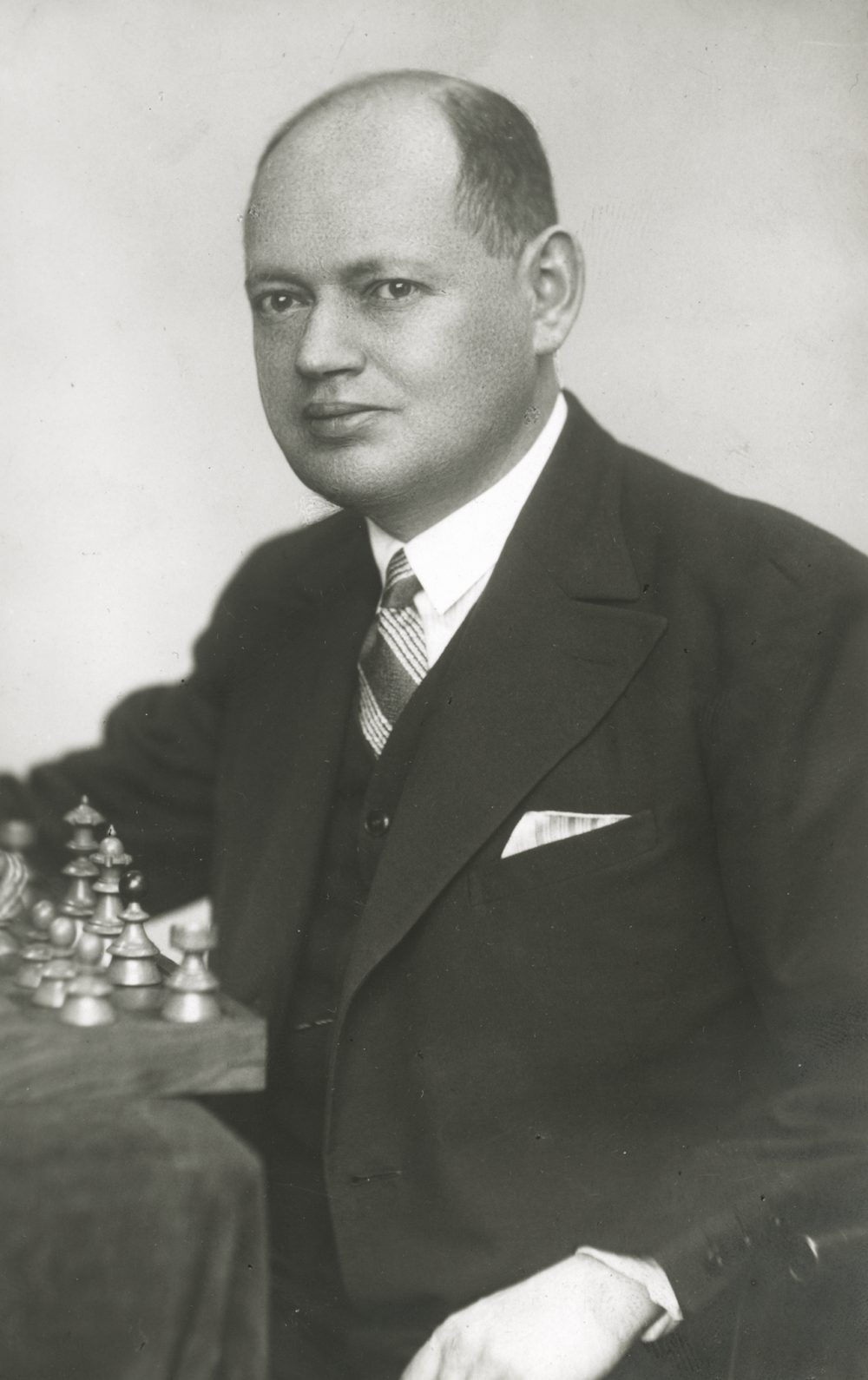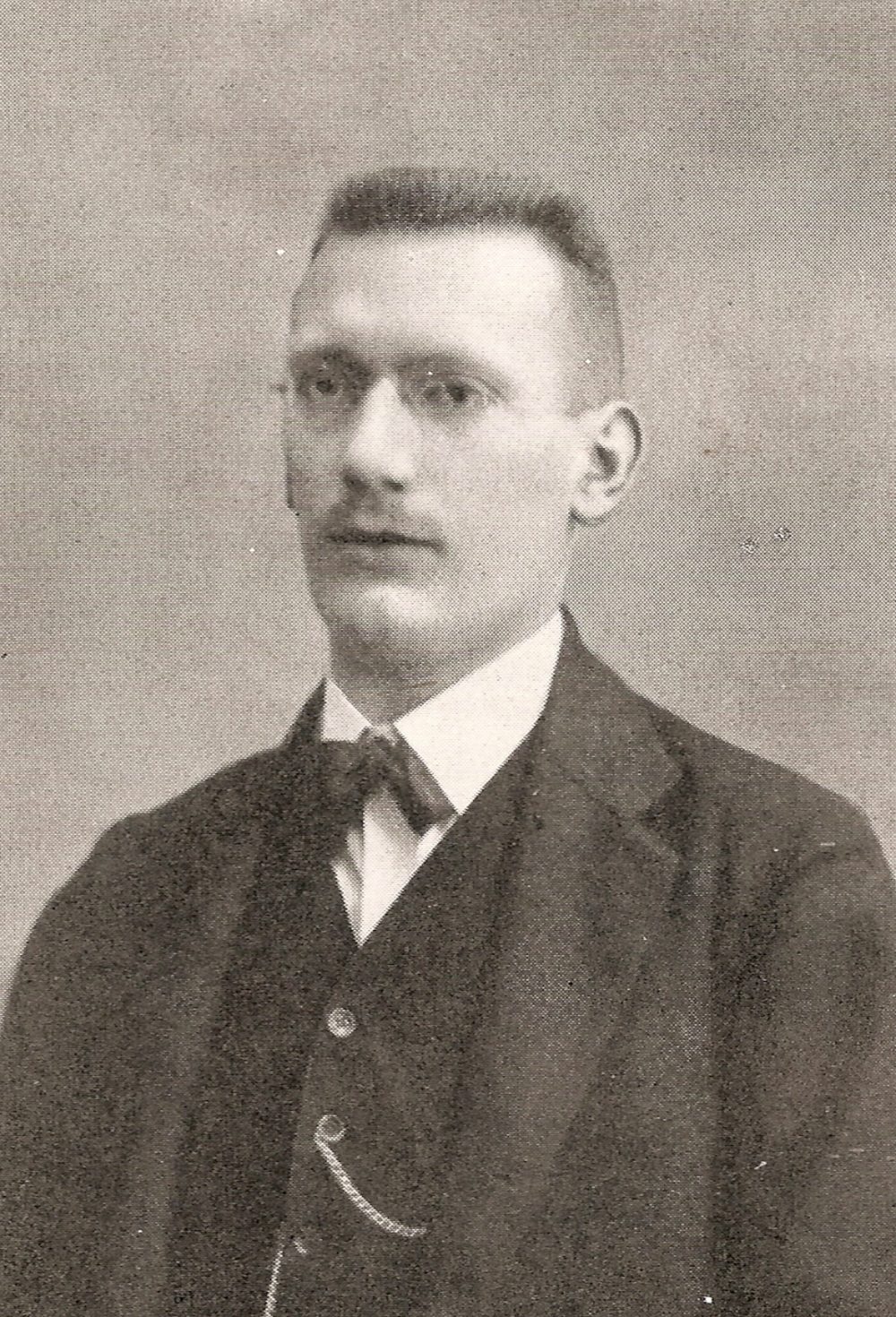Savielly Tartakower's victory at the Carl Schlechter - Memorial Tournament Vienna 1923
On Thursday, 15 November 1923 at 5 pm an international masters tournament organised by the Austrian Chess Federation began punctually in the Café Universale in Vienna's 7th district, Burggasse 28[1]. After the welcoming speeches - Josef Hanacik for the workers' chess club who hosted the event, Josef Krejcik as chairman of the Austrian Chess Federation and Paul Heuäcker for the Berlin Chess Federation - the lots were drawn and the rest of the afternoon was spent in stimulating conversation before the first round started at the same time the next day. It was the third international championship tournament to be held in Vienna after the First World War[2] and a first in more ways than one.
Soon after the early death of the most important player Vienna has ever produced - Carl Schlechter (1874-1918) - voices were raised in Viennese chess circles to organise a memorial tournament in his honour, for Schlechter had not only won several important international tournaments and been one of the best players in the world for twenty years, he was also the first and only opponent before Capablanca whom Emanuel Lasker was unable to defeat. In the difficult times after the First World War and the galloping inflation, the financing of such a tournament was of course the first and biggest hurdle.

Carl Schlechter
The Austrian Chess Federation (founded in 1920) with Josef Krejcik at the helm had managed with some difficulty to organise regular national tournaments and the club championship, but an international championship tournament? Too many different ideological groupings and interests clashed in the young association: the large workers' chess club was opposed by the German Chess Club (with its Aryan paragraph) and Hakoah (the Jewish chess club), while bourgeois clubs such as Hietzing, Landstrasse and SK Schlechter represented their own interests.
But Krejcik remained adamant. He argued that the only way to raise the standard of the other Viennese players was to compete against first-class masters.

Josef Krejcik as Chairman of the Austrian Chess Federation
While club competitions and club tournaments were primarily intended to bring the art of chess to a wider audience, international masters' tournaments were designed to give the best players from these events the opportunity to perfect their skills and become worthy opponents for the grandmasters. He presented the officials with a plausible financing option: All Viennese clubs should contribute to the financing of the tournament with graduated amounts ("entry fees"), depending on their size and participation in the club championship.
Interestingly, this idea met with little resistance, and with the help of a few small private patrons, the proceeds from a simultaneous performance by Rudolf Spielmann, and the entrance fees to the tournament, the impossible was made possible. But for all the sacrifices made by the clubs and patrons, the tournament would not have been possible without the idealism of the professional champions who were willing to take part in a tournament that did not promise them too much in return.
The prizes were: 1st prize 3,000,000 crowns 2nd prize 2,500,000 crowns 3rd prize 2,000,000 crowns 4th prize 1,000,000 crowns 5th prize 500,000 crowns. The total prize fund therefore totalled less than 3000 euros.[3]
But the Austrian Chess Federation had managed to present a united front despite many differences and to organise the tournament on its own, and the success of the tournament was largely due to its initiative.[4] This was the association's masterpiece, basically the squaring of the circle:
1) The field of participants was initially divided into three groups according to playing strength. The first group consisted of the grandmasters Grünfeld, Réti, Spielmann and Tartakower. The second group consisted of the International Masters Becker, Opočenský, Steiner and Takács, while the third group included the National Masters Fischer, Gruber, Patay and S. R. Wolf.

Richard Reti

Rudolf Spielmann
2) Then the field of participants was well divided regionally. Austria-Hungary celebrated its resurrection on the chessboard, as Steiner, Takács and Patay came from Hungary, Opočenský from the Czech Republic and the rest from Vienna, though only Grünfeld, Spielmann, Becker, Fischer and Gruber were real Viennese.
3) Almost half of the participants had known Schlechter personally or had played against him at the board: Grünfeld, Réti, Spielmann, Tartakower and S.R. Wolf.
4) Probably the most delicate point was the distribution of players within the association. They should adequately represent the most important clubs. The Deutscher Schachverein sent Albert Becker and Theodor Gruber, the Arbeiterschachklub Felix Fischer, the Hakoah their top man Sándor Takács and the Landstrasser Schachbund Siegfried Reginald Wolf.
The tournament was exciting, there were many excellent games and it ran smoothly and without any disagreements, a great merit of the tournament director Josef Hanacik, who was actively supported by Theodor Gerbec (Deutscher Schachverein Wien). Another innovation was that for the first time there were no adjournments. All games had to be completed within six hours.
Internationales Carl Schlechter – Memorial Tournament, Vienna, 16. 11. – 4. 12. 1923
|
|
|
1 |
2 |
3 |
4 |
5 |
6 |
7 |
8 |
9 |
10 |
11 |
12 |
|
|
1. |
Savielly Tartakower |
|
½ |
½ |
1 |
1 |
½ |
1 |
1 |
1 |
1 |
1 |
½ |
9 |
|
2. |
Richard Réti |
½ |
|
1 |
½ |
½ |
1 |
½ |
½ |
1 |
1 |
1 |
1 |
8½ |
|
3. |
Rudolf Spielmann |
½ |
0 |
|
½ |
1 |
½ |
1 |
1 |
½ |
1 |
½ |
1 |
7½ |
|
4./5. |
Ernst Grünfeld |
0 |
½ |
½ |
|
1 |
½ |
½ |
½ |
1 |
½ |
1 |
1 |
7 |
|
4./5. |
Lajos Steiner (HUN) |
0 |
½ |
0 |
0 |
|
1 |
½ |
1 |
1 |
1 |
1 |
1 |
7 |
|
6. |
Albert Becker |
½ |
0 |
½ |
½ |
0 |
|
½ |
1 |
1 |
1 |
½ |
1 |
6½ |
|
7. |
Karel Opočenský (ČSR) |
0 |
½ |
0 |
½ |
½ |
½ |
|
½ |
1 |
½ |
1 |
1 |
6 |
|
8. |
Sándor Takács (Hun) |
0 |
½ |
0 |
½ |
0 |
0 |
½ |
|
½ |
1 |
1 |
1 |
5 |
|
9./10. |
Felix Fischer |
0 |
0 |
½ |
0 |
0 |
0 |
0 |
½ |
|
½ |
1 |
½ |
3 |
|
9./10. |
Siegfried R. Wolf |
0 |
0 |
0 |
½ |
0 |
0 |
½ |
0 |
½ |
|
½ |
1 |
3 |
|
11. |
Gyula Patay (HUN) |
0 |
0 |
½ |
0 |
0 |
½ |
0 |
0 |
0 |
½ |
|
½ |
2 |
|
12. |
Theodor Gruber |
½ |
0 |
0 |
0 |
0 |
0 |
0 |
0 |
½ |
0 |
½ |
|
1½ |
[Österreichische Schachrundschau 1923, 39]
The Schlechter Memorial coincided not only with an era of political and economic upheaval, but also with an era of chess upheaval. Classical modernism was being joined by hypermodernism, and so in addition to the tried and tested Spanish Games and Queen's Gambits, there were many new opening systems that had hardly been seen before. Réti played the Réti Opening and with Black he tried the King's Indian with Black, which was still in its infancy, Grünfeld played the Grünfeld-Indian and against the Grünfeld-Indian and tried the Alekhine Defence, while Tartakower "naturally" often played outdated openings such as the King's Gambit.
The winner, Savielly Tartakower (1887-1956), was feared for his original openings, preferring those that were little known or considered downright bad, according to his motto: "As long as an opening is considered bad, it can be played".

Savielly Tartakower
As the hypermodernists' style of play was very similar to his own, he became the first author of the new style and gave it its name. Although this cosmopolitan was known in Vienna's Russian emigre circles exclusively as a poet, for the chess world Savielly Tartakower remains the uncrowned world champion of chess journalism. His articles, which he knew how to give a personal intellectual touch, appeared in dozens of daily newspapers and chess magazines all over the world.[5] As a man of letters Tartakower was astonishingly prolific. Not only did he write poetry in German, French and Russian, but he also wrote more than a dozen chess books, which were translated into several languages and which are full of sparkling, punchy wit and sarcasm, the so-called "Tartakowerisms".[6]
In 1919 he was granted first Ukrainian and then Polish citizenship, but from 1904 to 1924 he lived and worked in Vienna and continued to write for Viennese publishers. At the end of 1924 the confirmed bachelor moved permanently to Paris due to deteriorating living conditions, but left the Viennese a seminal work of the new chess with his book "The Hypermodern Game of Chess" (Vienna 1924).
And another first: it was Tartakower's first major tournament success, although he had played countless smaller and larger tournaments since living in Vienna. Tartakower had been a reckless player since his youth and nothing was more alien to him than excessive caution. When you go through his games you can see how fearlessly and unprejudiced he approached the openings. His confidence in his strength, in his middlegame and endgame skills, helped him to prevail in every game, whether he was in a good or bad position. He firmly believed, as he often said himself, that he had only lost when he was mated. He commented on his victory in Vienna with unsurpassed self-deprecation:
"As a means to an end, Tartakower chose only extremely solid and correct openings (e.g. the King's Gambit against Grünfeld and Réti), careful manoeuvring in the middlegame (see his bishop sacrifice against Fischer) and a purposeful endgame strategy, which enabled him to defeat most of his opponents (e.g. Steiner).

Lajos Steiner
One might be well advised to trust his rivals when they say that he won some of his games that were equal (especially against S.R. Wolf) with unprecedented luck, and only because of this was able to achieve his undeservedly high ranking." (Tartakower 1923a, 307)
Particularly his game against the theoretically well-versed Ernst Grünfeld in the fourth round was a psychological masterpiece:

Ernst Grünfeld 1924
For this reason the clever grandmaster Tartakower, well aware of the theoretical strength of his formidable opponent, allowed himself a small irregularity in the opening when playing Grünfeld in Vienna 1923. Master Grünfeld, somewhat astonished by this audacity, could not resist whispering to someone well-known [7] in the chess circles of Vienna: 'He has made a coffee house move!' When asked about it, Tartakower replied somewhat cynically: 'What else can I play against him?' And he was right, and won the game against his somewhat confused opponent."
Games
Tartakower, Savielly – Grünfeld, Ernst
Vienna 22. 11. 1923 (4)
1.e4 e5 2.f4 A long-established and, in my opinion, very solid continuation, to which I was inspired by Spielmann's recent article "From the sickbed of the King's Gambit" in Kagan's Neuesten Schachnachrichten. The article is extraordinarily lively and instructive, but its title should have been 'From the triumphbed of the King's Gambit', as his comments rather testify in favour of this opening. 2 … d5 3.d4 In the mistaken assumption to have played something completely new, but as the leader of the black pieces immediately revealed after the game, this move had already occurred in a correspondence game between S.R. Wolf and Becker. 3… exd4 4.Qxd4 The sequence 4.e5 c5 5.Nf3 Nc6 6.c3 etc. is less clear usw. is less clear and therefore not my type of game. 4… Nf6 5.exd5 A bad idea would be 5.e5 Ne4 6.Nc3 Bc5 7.Qxd5 Bf2+ followed by Nxc3+ winning the queen. 5… Qxd5 Now the two queens make an interesting stand against each other for a couple of moves. 6.Nf3 Nc6 7.Qe3+ After 7.Qxd5 Nxd5 8.Bb5 Bd7 or 8.Bc4 Ndb4 9.Na3 Na5 etc. White would have great difficulties as all the black pieces would be able to join the fray. 7... Qe4 The complications after e.g. 7... Be6 8.Nc3 (also possible is 8.Bd2 Bc5 9.Qe2) 8… Bb4 9.Bd2 Bxc3 10.Bxc3 etc. would be somewhat unsafe for Black. 8.Nc3 Bb4 9.Bd3 Qxe3+ 10.Bxe3 Nd5 11.Bd2 Nxc3 12.bxc3 Bc5 Now both sides' plans have become clear: Black aimed to undermine the opponent's pawn structure, while White has worked towards greater piece development. 13.0–0–0 0–0 14.f5 Despite the early exchange of queens, White succeeds in immobilizing the enemy forces and launching a fierce king-side attack. 14… Bd7 15.Bf4 Tac8 After 15…Bb6 or 15…Ne7 the advance 16.f6 (threatening Bxh7+ followed by Rxd7) would gain even more energy.
16.f6 On 16.g4 (to keep the black rook on d7 restricted as much as possible), Black could somewhat free himself through the regrouping 16... Rfd8 17. Be4 Na5 18. Ne5 Be8, etc. Therefore, White decides to exert strong pressure. 16… Be6 17.Ng5 h6 Black is defending vigorously. After 17... g6, 18. Nxe6 fxe6 19. Bc4 Rxf6 20. Bg5 would lead to an advantage in material for White. Similarly, 17... Bxa2 would be less promising due to 18. Bxh7+ Kh8 19. fxg7+ Kxg7 20. Kb2 (better than 20. Bf5 Ba3+ 21. Kd2 Rcd8+), 20... Be6, and so on. 18.fxg7 Kxg7 19.Ne4 Much more effective than something like 19. Nxe6+ fxe6 20. Bg3 (20. Rf1? allowing Rxf4 followed by Be3+), 20... Be3+ 21. Kb2 Bf4 with a significant simplification of forces. 19... Ba3+ A sharp alternative would have been 19... Be7 20. Ng3! Bg5 21. Nh5+ Kh8 22. Bxg5 hxg5 23. h4! Bxg4 24. hxg5 and winning. 20.Kb1 Ne7 Now Black threatens to get counterplay. 21.Ng3! With 21. Be5+ f6, White would achieve nothing. Also worth considering were preparatory moves like 21. c4 and 21. Rhf1. For example: 21. Rhf1 Nd5 (better 21... Ng6) 22. Bd2 c5 23. c4 Rc6 24. Ka1, and so on. However, the text maneuver represents the most precise exploitation of White's positional advantage since it immediately threatens Nh5+ and prevents f5. 21... Bg4 22.Rdf1 Bd6 The best move. On 22... Ng6, 23. h3 Nxf4 24. hxg4! would quickly decide. 23.h3 Bxf4 24.Rxf4 Be6 25.Nh5+ Kh8 26.Rhf1 The exchange sacrifice after 26. Rf6 Ng8 27. Rhf1 Nxf6 28. Rxf6 Rfd8 would hardly be correct. The text move significantly reinforces White's mating threats. 26… Nd5? With 26... c5, Black might have achieved an equal position. For example, following the plausible sequence 27. Rh4 c4 28. Be4 Ng6!, both sides would be approximately equal. 27.Rh4 Nxc3+ 28.Kb2 Nd5 29.Nf6 In time trouble, White decides to settle for a small advantage since all complications after something like 29. c4 Nb4 30. Bb1 f5 (for example, 31. Nf4 Rf6 32. Nxe6 Rxe6 33. Bxf5 Rf8, etc.) would have been hard to assess.
29... Kg7?? was clearly a mistake. The correct move was, of course, 29... Nxf6, and since the leader of the white pieces is not known to be a proficient endgame player, it's questionable whether he could exploit his small advantage (the beautiful passed pawn on h3, while the black pawn mass on the queenside is quite clumsy) for a win. However, he had planned after 29... Nxf6 30. Rxh6+ Kg7 31. Rhxf6 Rh8 32. R6f4 to maintain the positional pressure. 30.Nxd5 Bxd5 31.Rg4+ Kh8 32.Rf6 Resigns.
(Shortened annotations by Tartakower in: Österreichische Schachrundschau 1924, 69-72)
Replay
Tartakower also played the best endgame of the tournament:
Tartakower, Savielly - Steiner, Lajos
Vienna 4. 12. 1923 (11)
20.Rad1! The threat of Bd5 is now unstoppable. Black finds the best response. 20… Ne5 21.Bd5 Ng4! 22.Bxe4 Nxe3 23.fxe3 Bc5 24.Kg2! More important than keeping the extra pawn is securing a good position. After 24. Rxf8+ Rxf8 25. Rd3, Black would play 25... Re8 26. Bxb7 Rxe3 27. Rxe3 Bxe3+ and the game would end in a draw. 24… Rxd1 After 24… Rxf1 White wins with 25.Rxd8+ Rf8 26.Rxf8+ followed by Bxb7. 25.Rxd1 Bxe3 26.Rd7 Bb6 If 26... Rf2+ 27.Kh3 g5, then 28.Rh7+ Kg8 29.Rxc7 Rxb2 30.Bxb7! etc. 27.Kh3! Kg8 28.Bd5+ Kh7 29.Bf7! h5! Steiner recognizes the magnitude of the danger: encirclement with Kg4 and Kh5. On 29... g6, 30. Be8+ Kg8 31. Bxg6 Rf2 32. b4!, and on 29... g5, the winning continuation is 30. Kg4 Kg7 31. Bc4+ Kg6 32. Bd3+ Kf6 33. Rh7. 30.g4! It's admirable how White handles the endgame. The bishop on f7 must not leave its dominant post, or else the black rook will become free. 30… hxg4+ 31.Kxg4 Kh6 32.Kf5 c6 He can't do anything else. If 32... g6+, then 33. Kf6, threatening Rd3+. 33.Rxb7 Rd8 34.h4 Rd2 35.b4 Rf2+ 36.Ke6 Rf6+ Black cannot go after the Bc3; if 36... Rc2, then 37. Rb8 Kh7 38. h5 Rxc3 39. Bg6+ Kh6 40. Kf5, and Black cannot defend against the mate. 37.Ke7 Bf2 38.h5 Rf3 39.c4 Bh4+ 40.Kf8 Ra3 41.c5 a5 White threatened 42.Rc7. After 41… Bf6 White plays as he did in the game. 42.b5 cxb5 43.Rxb5 a4 Otherwise, 44. Bb3 (threatening c5-c6) followed by 44... a4 45. Ra5. 44.Rb4 Bf6 45.Rg4! Bg5 Threatening 46.Rg6+ Kh7 47.Bg8+ Kh8 48.h6 etc.
46.Txg5! Decisive. White's two passed pawns win without much trouble. 46... Kxg5 47.Kxg7 Kf5 48.c6 Tg3+ 49.Lg6+ 1-0. Dr. Tartakower played in grandmasterly fashion!
(Annotations by Lajos Steiner in Lachaga 1968, 74)
Replay
The first brilliancy prize of 5 dollars was awarded to Richard Réti (1889-1929) for his game against Theodor Gruber, and that for a truly hypermodern setup!
Réti was also involved in the most beautiful draw of the tournament:
"A fantastic draw in which the combinator Réti proved to be a great opening artist and the opening artist Grünfeld a great combinator". (Tartakower 1924, 5)
The otherwise somewhat disappointing Rudolf Spielmann (1883-1942) catapulted himself into the winner's circle with a thrilling victory in the final round.
Ernst Grünfeld (1893-1962), whose performance in 1923 had been on a steep upward curve (victories in Margate and Frankfurt, third place in Moravian Ostrava, both without defeat!), was also somewhat disappointing, although he did play some splendid games.
The youngest participant, 19-year-old Hungarian Lajos Steiner (1903-1975) from the famous Steiner chess family (father Bernát, brother Endre, cousin Herman), impressed with his uncompromising games and was leading for a long time. However, he only scored half a point from four games against the grandmasters, while the rest of the field was dispatched with 6.5 out of 7.
Literature
Deutsche Schachzeitung 1923
Lachaga, Milciades A. (1968): Karl Schlechter. Seine Schachlaufbahn Sein Match 1910 um die Weltmeisterschaft und das 1. Gedenkturnier Wien 1923. Buenos Aires
Magyar Sakkvilág 1924
Müller, Hans (1924): Grünfeld. In: Neues Wiener Journal 24. 11. 1924, 8
Österreichische Schachrundschau 1923, 1924
Palitzsch, Friedrich (1923): Das Schlechter-Gedenkturnier zu Wien. In: Deutsche Schachzeitung 1923, 265-266
Tartakower, Savielly G. (1923a): Das Karl-Schlechter-Gedenkturnier des Oesterreichischen Schachverbandes in Wien. Dr. Savielly Tartakower – Sieger. In: Neue Wiener Schach-Zeitung 1923, 305-317
Tartakower, Savielly (1923b): Karl Schlechter-Gedenkturnier des Österreichischen Schachverbandes zu Wien vom 15. November bis 5. December 1923. (Rosige Betrachtungen eines hohen Preisträgers.) In: Österreichische Schachrundschau 1923, 36-39
Tartakower, Savielly (1924): Das Karl Schlechter-Memorialturnier des Österreichischen Schachverbandes in Wien vom 15. November bis 5. December 1923. Ein Rückblick. In: Magyar Sakkvilág 1924, 3-7
Thanhofer, Hans (1924): Das Karl Schlechter-Gedenkturnier. In: Österreichische Schachrundschau 1924, 1-20
Wiener Schachzeitung 1923, 1924
[1] The huge café was then the headquarters of the Vienna Workers' Chess Club, which became the Austrian Workers' Chess Federation in 1925. Today the café is known as "The Lizard Pub & Billiards" and is a popular meeting place for billiards and darts enthusiasts with 9 large billiards tables and a separate room for darts..
[2] The Vienna tournament in 1921, won by Fritz Sämisch, was organised and financed by the Vienna Chess Club, while the young Austrian state bore all the costs of the Vienna tournament in 1922 (winner Akiba Rubinstein).
[3] It was not until 1925 that the Schilling was introduced in Austria, bringing a return to more or less normal economic conditions.
[4] It was also the first and last international tournament to be organised by a unified Austrian chess association. As early as 1924, the Workers' Chess Club left the association and founded its own Workers' Chess Federation.
[5] From August 1920 his chess column in the Viennese "Illustrierte Rundschau" went for years without a single game.
[6] To illustrate this, here are some of these aphorisms that have become commonplace: "The penultimate mistake wins." "Last truths are often first lies." "The tactician must know what to do when there is something to do; the strategist must know what to do when there is nothing to do." "The threat is stronger than its execution." "It is always better to sacrifice your opponent's pieces." "No one has ever won a game by resigning."
[7] This refers to the author Hans Müller himself.






























